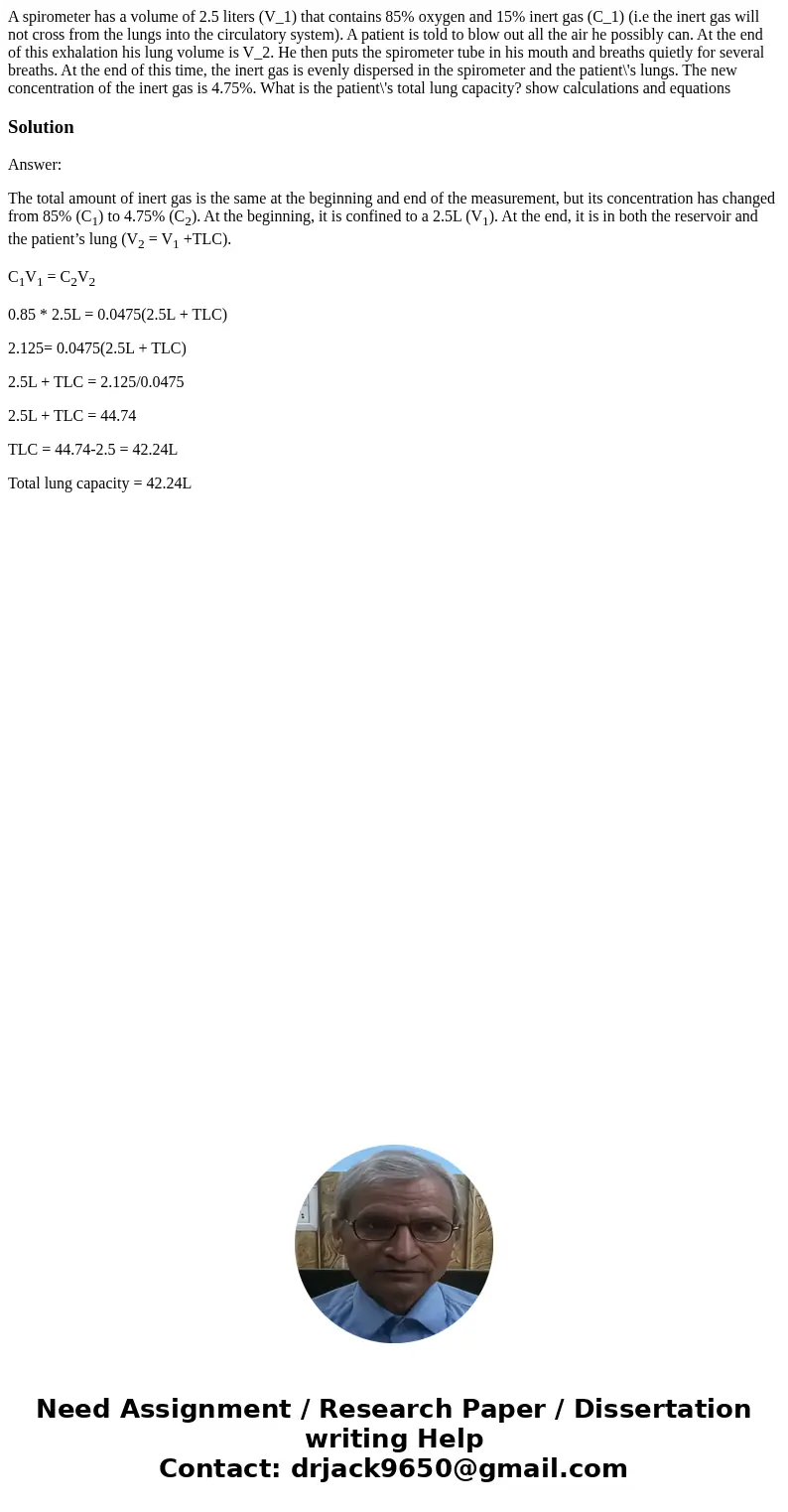A spirometer has a volume of 25 liters V1 that contains 85 o
A spirometer has a volume of 2.5 liters (V_1) that contains 85% oxygen and 15% inert gas (C_1) (i.e the inert gas will not cross from the lungs into the circulatory system). A patient is told to blow out all the air he possibly can. At the end of this exhalation his lung volume is V_2. He then puts the spirometer tube in his mouth and breaths quietly for several breaths. At the end of this time, the inert gas is evenly dispersed in the spirometer and the patient\'s lungs. The new concentration of the inert gas is 4.75%. What is the patient\'s total lung capacity? show calculations and equations 
Solution
Answer:
The total amount of inert gas is the same at the beginning and end of the measurement, but its concentration has changed from 85% (C1) to 4.75% (C2). At the beginning, it is confined to a 2.5L (V1). At the end, it is in both the reservoir and the patient’s lung (V2 = V1 +TLC).
C1V1 = C2V2
0.85 * 2.5L = 0.0475(2.5L + TLC)
2.125= 0.0475(2.5L + TLC)
2.5L + TLC = 2.125/0.0475
2.5L + TLC = 44.74
TLC = 44.74-2.5 = 42.24L
Total lung capacity = 42.24L

 Homework Sourse
Homework Sourse